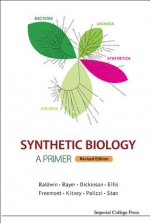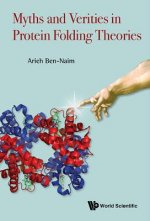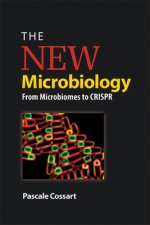
Code: 10804198
Intermediate Filaments
by Normand Marceau, Anne Loranger, Stephane Gilbert
Intermediate filaments (IFs), in concert with microfilaments (MFs) and microtubules (MTs), form the cytoskeleton, and each of these fibrillar networks exhibits rather unique structural and functional characteristics. Intermediate ... more
- Language:
 English
English - Binding: Paperback
- Number of pages: 112
Publisher: Morgan & Claypool Publishers, 2014
- More about this

You might also like
-

Ball Game Biz
37.83 €
Give this book as a present today
- Order book and choose Gift Order.
- We will send you book gift voucher at once. You can give it out to anyone.
- Book will be send to donee, nothing more to care about.
More about Intermediate Filaments
You get 184 loyalty points
 Book synopsis
Book synopsis
Intermediate filaments (IFs), in concert with microfilaments (MFs) and microtubules (MTs), form the cytoskeleton, and each of these fibrillar networks exhibits rather unique structural and functional characteristics. Intermediate filaments were discovered in eukaryotic cells in the late 1960s, and their name comes from the fact that their diameter is intermediate between MFs and MTs. In contrast to the latter, IFs constitute a network that extends from the nuclear envelope throughout the cytoplasm, and in many cases, interact with cell surface domains involved in cell-cell and cell- matrix interactions. Several key features of their expression, assembly, structure and dynamics are highlighted in this eBook. For instance, IF proteins are encoded by several genes, which are classified into six types reflecting the tissues (cells) of origin. Moreover, IF proteins contain a conserved central a-helical (rod) domain flanked by N-terminal (head) and C-terminal (tail) globular domains that enables assembly of fibrous IFs exhibiting a tripartite structure. Although the rod domain is responsible for the formation of the coiled-coil framework and yields the main driving force during the IF protein assembly, the head and tail domains contribute to most of the structural heterogeneity of IF organization and undergo several types of post-translational modifications. Furthermore, the development of gene targeting methods to genetically knockout the expression of the IF genes in mice has uncovered the mechanical versus non-mechanical features of the IF networks, namely, their involvement in cell response to diverse forms of stress, growth stimulation, migration, or death insults. Finally, there is accumulating evidence revealing that the tissue and cell-type expression of IF genes reflects itself in the presence of causal or predisposition mutations responsible for numerous human tissue-specific diseases, known as IF-pathies. Table of Contents: List of Abbreviations / Introduction / IFs as a Multigene Family of Filamentous Proteins / Nuclear Lamina / IF Functional Interplay with Cell Surface Domains and Organelles / IFs and Cell Specialization / IF Relevance to Human Diseases / Conclusion / References / Author Biographies
 Book details
Book details
Book category Books in English Mathematics & science Biology, life sciences Molecular biology
73.44 €
- Full title: Intermediate Filaments
- Author: Normand Marceau, Anne Loranger, Stephane Gilbert
- Language:
 English
English - Binding: Paperback
- Number of pages: 112
- EAN: 9781615045402
- ISBN: 9781615045402
- ID: 10804198
- Publisher: Morgan & Claypool Publishers
- Weight: 242 g
- Dimensions: 235 × 187 × 7 mm
- Date of publishing: 01. June 2014
Trending among others
-

Molecular Biology
88.88 € -

Sync
19.87 € -13 % -

Synthetic Biology - A Primer (Revised Edition)
42.06 € -

Molecular Cloning
332.65 € -

Schaum's Easy Outline Molecular and Cell Biology, Revised Edition
15.43 € -14 % -

Molecular Biology
155.37 € -2 % -

Molecular Cell Biology
81.72 € -6 % -

BIOS Instant Notes in Molecular Biology
41.26 € -

MicroRNA in Human Malignancies
136.10 € -25 % -

Molecular Biology and Biotechnology
82.12 € -

Guide to Clinical and Diagnostic Virology
183.62 € -

Lewin's GENES XII
94.93 € -

Molecular and Cellular Biophysics
89.18 € -

Antisepsis, Disinfection, and Sterilization
154.56 € -

Virulence Mechanisms of Bacterial Pathogens 5th Edition
159.61 € -

Primer of Molecular Population Genetics
76.67 € -

Myths And Verities In Protein Folding Theories
39.24 € -

Molecular Biology
14.82 € -

Basics of Molecular Biology
31.17 € -19 % -

Essential Oils and Nanotechnology for Treatment of Microbial Diseases
266.86 € -

New Microbiology
32.08 € -

Gene Expression and Manipulation in Aquatic Organisms
52.25 € -

Accuracy in Molecular Processes
61.44 € -

Readings in Molecular Biology
37.93 € -

Bacteriophages
238.31 € -2 % -

Fluorescent Analogs of Biomolecular Building Blocks - Design and Applications
117.94 € -40 % -

Molecular Methods in Ecology
147.50 € -

Python for Bioinformatics
112.19 € -

Exosomal RNA
184.43 € -

The Charnolosome as a Novel Nanothereranostic Biomarker
181.10 € -

Management, Body Systems, and Case Studies in COVID-19
273.12 € -

Tuberculosis and Nontuberculous Mycobacterial Infections,
208.95 € -

Between Nucleus and Cytoplasm
240.53 € -

Molecular Biology
137.82 € -6 % -

Anandamide in Health and Disease
203.50 € -

Molecular Medicine and Biomedical Research in the Era of Precision Medicine
175.85 € -

Molecular Microbiology - Diagnostic Principles and Practice, Third Edition
205.01 € -

Mitochondria
197.04 € -

Molecular Biology of the Hepatitis B Virus
364.63 € -

Avian Malaria Parasites and other Haemosporidia
408.32 € -

Medical Biotechnology
148.31 € -

Next-Generation DNA Sequencing Informatics, Second Edition
55.89 € -

Advanced Textbook On Gene Transfer, Gene Therapy And Genetic Pharmacology: Principles, Delivery And Pharmacological And Biomedical Applications Of Nuc
255.76 € -

Molecular Biology: Structures and Techniques
142.36 € -6 % -

Molecular and Cellular Biology of Viruses
90.39 € -

Diagnostic Molecular Biology
178.38 € -4 % -

In The Spirit Of Science: Lectures By Sydney Brenner On Dna, Worms And Brains
32.58 € -

Metabolomics
218.84 € -

Calculations for Molecular Biology and Biotechnology
94.33 €
Collection points Bratislava a 2642 dalších
Copyright ©2008-24 najlacnejsie-knihy.sk All rights reservedPrivacyCookies



 15549 collection points
15549 collection points Delivery 2.99 €
Delivery 2.99 € 02/210 210 99 (8-15.30h)
02/210 210 99 (8-15.30h)